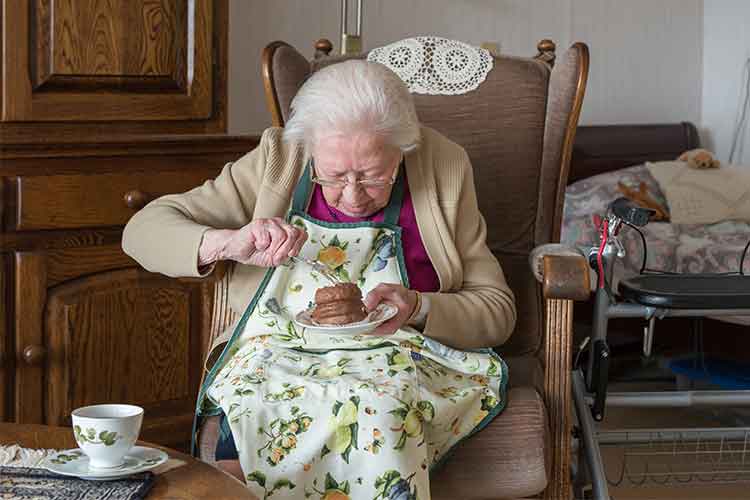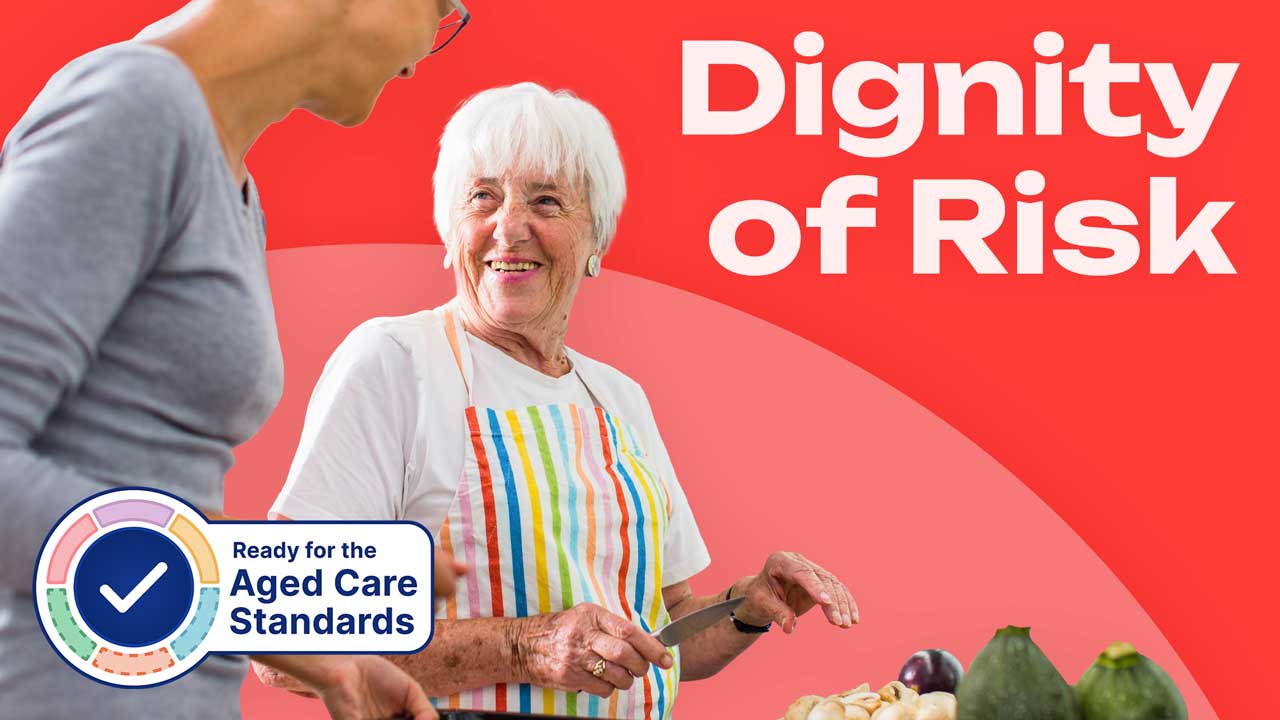What is ‘Dignity of Risk’?
‘Dignity of risk’ refers to the concept of affording a person the right (or dignity) to take reasonable risks and acknowledging that impeding this right can suffocate personal growth, self-esteem and the overall quality of life (Ibrahim & Davis 2013).
In other words, dignity of risk means that people should be supported to live the life they choose, even if there are risks involved. This is a crucial component of person-centred care (ACQSC 2022).
Since the first use of the phrase, care settings have come a long way in encouraging independence and decision-making.
At times, however, care workers are still faced with the difficult job of balancing the dignity of risk of their clients with their duty of care (Keast 2016).
Concerns are often raised about the disconnect between theory and practice, for instance, how risks can be taken when care workers have responsibilities and could face the brunt of complaints or even compliance action.

Dignity of Risk Under the Strengthened Aged Care Quality Standards
Standard 1: The Person - Outcome 1.3: Choice, independence and quality of life (Action 1.3.5) of the strengthened Aged Care Quality Standards requires aged care providers to support older people to live the best life they can. This includes allowing them to take positive risks that increase their autonomy and quality of life (ACQSC 2024a).
Additionally, Standard 7: The Residential Community - Outcome 7.1: Daily living (Action 7.1.1) states that older people should be supported and enabled to do things they want to do. Older people’s choices should be respected and their dignity of risk upheld, particularly in relation to activities of daily living (ACQSC 2024b).
Reframe Your Thinking

The key to achieving dignity of risk is reframing how care providers think about risk (Hermant 2015).
Instead of thinking about how to avoid all risks, we should think about supporting someone to do what they want safely (Keast 2016).
A care provider’s role could include ensuring a client’s decision is an informed one by offering them all relevant information and then maintaining support, whatever the outcome.
Ways You Can Support Dignity of Risk
A person’s autonomy and right to make decisions for themselves should be paramount in all settings. However, your responsibilities and duty of care should not be compromised when striving to uphold these dignities.
Keep in mind the following:
- Always consider a person’s capacity to make decisions. Are they present of mind? Do they have all the information they require? Should a family member or their GP be consulted first?
- Consider what constitutes a ‘reasonable’ risk, e.g. food choices, daily walks or refusal of recommended care.
- Keep sufficient documentation. Ensure you have documented every facet of the decision-making process, from who has been consulted to the information you have provided to the person regarding potential risks and their subsequent acknowledgement of these risks.
- Familiarise yourself with your organisation’s policies. Ensure you are only working within the scope of your role and what processes must be followed to fulfil a person’s request.
(Keast 2016; Woolford 2017)

Test Your Knowledge
Question 1 of 3
True or false: Affording dignity of risk is more important than upholding your duty of care.
Topics
Further your knowledge
References
- Aged Care Quality and Safety Commission 2024a, Standard 1: The Individual, Australian Government, viewed 12 April 2024, https://www.health.gov.au/resources/publications/strengthened-aged-care-quality-standards-august-2025?language=en
- Aged Care Quality and Safety Commission 2024b, Standard 7: The Residential Community, Australian Government, viewed 12 April 2024, https://www.health.gov.au/resources/publications/strengthened-aged-care-quality-standards-august-2025?language=en
- Aged Care Quality and Safety Commission 2022, What is Dignity of Risk?, Australian Government, viewed 12 April 2024, https://www.agedcarequality.gov.au/resource-library/what-dignity-risk-consumer-resources
- Hermant, N 2015, ‘Dignity of Risk: Elderly Should be Allowed to do ‘Risky’ Activities to Improve Lifestyle, Professor Says’, ABC News, 22 November, viewed 12 April 2024, https://www.abc.net.au/news/2015-11-22/risky-activities-could-improve-quality-of-life-for-elderly/6939166
- Ibrahim, JE & Davis, MC 2013, ‘Impediments to Applying the ‘Dignity of Risk’ Principle in Residential Aged Care Services’, Australasian Journal of Ageing, vol. 32, no. 3, viewed 12 April 2024, https://onlinelibrary.wiley.com/doi/10.1111/ajag.12014
- Keast, J 2016, ‘A Balancing Act: Dignity of Risk vs. Duty of Care’, Australian Ageing Agenda, 11 May, viewed 12 April 2024, https://www.australianageingagenda.com.au/clinical/health-medical/a-balancing-act-dignity-of-risk-vs-duty-of-care/
- Woolford, M 2017, Exploring the Concept of ‘Dignity of Risk’, Monash Forensic Medicine, Monash University, 25 May, viewed 12 April 2024, https://www.coursehero.com/file/106354503/Exploring-the-concept-of-Dignity-of-Riskpdf/
 New
New 

